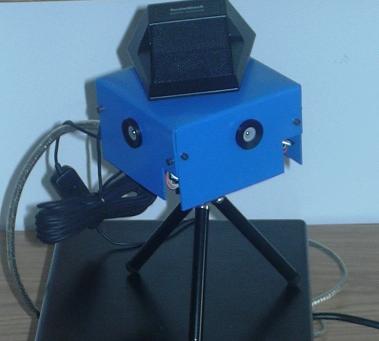Research interests
My work is to solve the problems machines face to understand the world and interact with the environment and the objects around them so they can operate intelligently and produce efficient work. I apply my work to agricultural robotics field, developing robotic devices that can navigate autonomously, sense the environment, react to their sorroundings and collaborate with humans for the most efficient production. I provide the industry with robust technology, algorithms and fully developed solutions, ranging from smart sensing devices to fully autonomous capable vehicles, with the goals to improve productivity, efficiency and quality of the final products.Current projects cannot be disclosed publicly, however here is a list of past projects:
Integrated Automation for Sustainable Specialty Crops Farming
Fully autonomous systems capable of following pre-taught paths while detecting and avoiding obstacles .
Projects
Projects at CMU
"Vehicle Safeguarding"
Having a system capable of detecting obstacles and terrain hazards would significantly increase the safety of both manned and unmanned agricultural vehicles. This project focuses on perception to provide machine awareness of environment as an element for safeguarding agricultural vehicles. Our approach is to use modern machine learning techniques and sensor fusion for building a robust obstacle detection system that can be adapted easily to different environments and operating conditions.
Click here for more details
"Camera Assisted Meeting Event Observer"

In order to effectively interact with humans in a natural fashion, an intelligent agent-based office assistant must have a robust physical awareness system with which it can sense humans as they perform tasks in the real world. The Camera Assisted Meeting Event Observer (CAMEO), is a sensory system designed to provide an electronic agent with physical awareness of the real world. CAMEO is the physical awareness (PA) component of a larger effort to develop an enduring personalized cognitive assistant that is capable of helping humans handle the many daily business/personal activities that they engage in.
We built CAMEO, a sensory system able to provide audio and video data with 360 degrees field of view. CAMEO automatically detects people and learns person-specific facial appeareance models on-line, which allows real time tracking and identification. This is a first step towards understanding and reasoning about human interactions from audio-visual information. Here is an example of the mosaic generated by CAMEO from 4 independent camera video streams:
Some videos of the tracker in CAMEO:
Click here for more details
Projects at GTD
"AdvaNced Global system to Eliminate antipersonnel Landmines project (ANGEL)"
ANGEL proposes a GLOBAL system approach: from the highest level detection to the neutralization and/or destruction of the threats. This complex architecture, designed to defeat mines and UXOs (those which represent a risk for civil use of a given area), has been arranged around a four-level task distribution. Level 1, Usage of detailed geographic data provided by satellites combined with further information (like conflict historic evolution, recorded casualties, current demining missions). Level 2, The Large Area Vehicle provides the first step towards threat area reduction, being able to identify probable target fields that should be addressed by the next level survey. Level 3, The Single Target Location Vehicle is going to detect (location + identification) each single threat in the suspicious areas. Level 4, The Neutralization/Destruction Vehicle provides the last contribution to the project goals.
More information at ANGELs project webpage
Projects at La Salle Bonanova
“Design and development of the engine and interface of an application for Multi platform Videoconference running on the Internet”.
It consisted on designing and implementing a new video and audio enconder and decoder system able to work using a 50Kbps network. It also involved designing a graphical user interface for video/audio capture and compression, and a remote client interface.
“Automatic Breast Cancer Diagnosing Tool using Case Based Reasoning”
The aim of this project was to build a tool for helping experts in the diagnose of breast cancer by using digital mammographies. The tool consisted on a cross-platform graphical interface for introducing, displaying, processing and classifying new ammmographies. It also was able to support its guess by using the most similar ones to the one presented from a data base, Each mammography was processed using image segmentation algorithms and converted into an array of vectors, each one contaning 23 features from each micro-calcification automatically detected in the mammography. Then, a classifier based in Case Based Reasoning (CBR) was used for classifying a mammography into cancer/no cancer.
